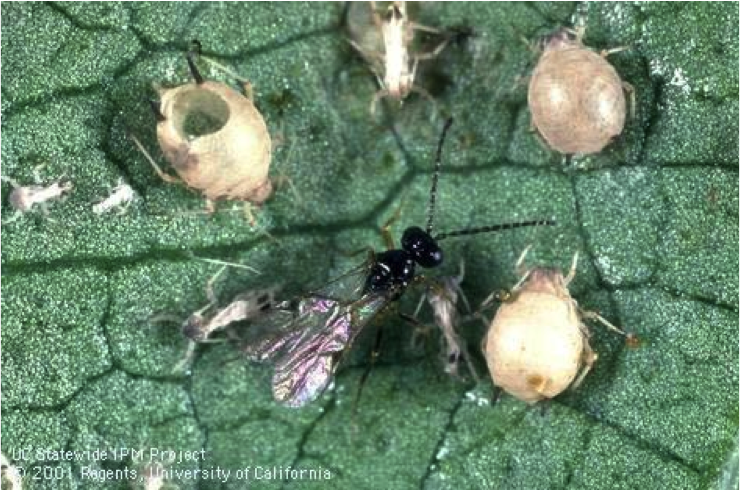Lysiphlebus testaceipes is the primary parasitoid of most cereal aphids that occur on the High Plains, including greenbugs, corn leaf aphids and bird cherry-oat aphids. It can also parasitize sugarcane aphids, provided they are not infected with Hamiltonella defensa, a secondary aphid endosymbiont that prevents eggs of these branoid parasitoids from hatching. Each female can parasitize several hundred aphids, although they only live 2-3 days. Parasitized aphids become swollen and form mummies, from which adult wasps emerge a few days later.



Female wasps use an ovipositor to lay eggs in a host aphid. Wasp larva develop and pupate within the host body, feeding selectively on the host’s internal tissues (endoparasitism), which eventually causes the aphid to form a dry, brown mummy (pictured here). Mummies will also display perfectly circular holes after adult wasp emergence.
